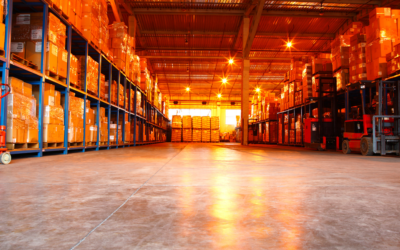Radio Frequency Identification (RFID) and omnichannel are not just the future of retail – they are the “now.” Retailers dealing with large inventories that have yet to take advantage of RFID technology and omnichannel are missing out on increased profit potential, loss prevention, cost savings, payroll savings and so much more. At the same time, a sometimes-overlooked benefit of RFID inventory management systems is perhaps the most important one of all: how it helps customers.
Here are 3 ways to improve retail customer experience from RFID
1. Omnichannel and RFID Provide a Seamless Shopping Experience
Implementing omnichannel ensures that customers and retail staff have seamless access to the many RFID benefits related to inventory visibility, the ability to make purchases across all retail shopping environments (including web-based shopping, telephone ordering, and in-store shopping), skipping checkout lines, and more. Omnichannel offers seamless integration by bridging the communication gaps that exist between a retailer’s website, telephone, and in-store shopping environments. Here’s what omnichannel can do:
- Integrate communication channels across the scope of a customer’s shopping experience.
- In-store customer service representatives can reference a particular customer’s past purchase history and purchase preferences the same way webchat representatives and telephone reps can.
- Customers can access store inventory information from their desktop computers, buy the item on their smartphones, and then pick the items up at whatever store location is most convenient.
2. Smart Labeling Means Lower Costs and Better Inventory Maintenance
When a store’s inventory is not being tracked, the likelihood of items being misplaced is much higher. This can lead to frustrated customers who can’t buy the item they’re looking for, even though the item is actually in the store somewhere. It can also lead to inadvertent double-ordering on products and/or theft by employees without the retailer knowing it. This is where smart labeling and tagging with RFID technology can help. All the information gathered by smart labeling is put at the fingertips of employees, allowing retailers to:
- Instantly identify items stored on pallets.
- Keep track of store-housed inventory.
- Create “smart shelves” that offer real-time locating and tracking of items stored on shelves.
- Streamline shipping and receiving operations.
- Speed up the process of matching customers with the products they are looking for.
- Reduce prices for more customer savings.
- Make real-time inventory information available to customers via web and mobile applications, and in-store sales clerks.
3. Lightning-Fast Checkout Procedures
Retailers spend a lot of time marketing and advertising to move their customers through the sales funnel, eventually getting them to the point of purchase. However, checkout is not the end of retailers’ relationships with customers, and the purchasing process can end up seriously affecting the experience customers have in-store and the overall reputation of the store itself. Any method of speeding up this process, without needing to hire a larger team of sales clerks, is a win-win for customers and retailers alike.
Omnichannel and retail rfid allow for faster and easier checkout with fewer mistakes, so customers spend the right amount of money on items, get through the line faster, or skip it altogether. Inventory levels are also tracked for the swift, automatic re-ordering of product. Here is how omnichannel and RFID in retail help with checkout procedures:
- Lessen the length of time customers wait in line.
- Reduce the number of sales clerks required to process sales and accept customer payments.
- Allow for quick scanning of multiple items and quickly accepting payment.
- Allow customers to skip the line altogether. For example, a customer might be able to order a product and pay for it via a smartphone, then go to the store to pick it up without spending a second in line with a sales clerk.
RFID in Retail: Here to Stay
RFID in retail, coupled with omnichannel, boosts the efficiency and productivity of retail businesses and this raises the bar on high-level customer satisfaction. Considering the numerous ways the biggest companies are using omnichannel and RFID right now, it’s clear to see why RFID will continue to be adopted for inventory management systems in the retail industry: it gives retailers a huge competitive advantage in the conveniences they can provide to their customers.


